Malop Street Green Spine
Earlier this year, a decision by the City of Greater Geelong sparked outrage and opposition from some within the community including Member for Bellarine Lisa Neville. This decision was overruled when the Victorian State Government declared the Green Spine precinct, Mercer Street, Garden Street and Malop Street, a Designated Road Project.
Background
The Revitalising Central Geelong Action Plan is a 10 year plan released in 2016 by the State Government to drive development and investment in central Geelong. This plan builds on the Vision 2 plan, and the Geelong waterfront transformation in the 1990s, the latter turning an industrial port precinct into the bustling promenade and beach we see today.
The Green Spine is one of six key moves in the Revitalising Central Geelong Action Plan, turning Malop Street into a linear park connecting Eastern Park to Johnstone Park and the railway station.
The first stage of the project was constructed in 2018 from Moorabool Street to Yarra Street, with $8 million contributed by the City of Greater Geelong, Development Victoria and the Department of Environment, Land, Water and Planning. To accommodate the linear park, separated bicycle lanes, and wider pedestrian space; parking was removed on the southern side of the road and turning lanes were removed at intersections.
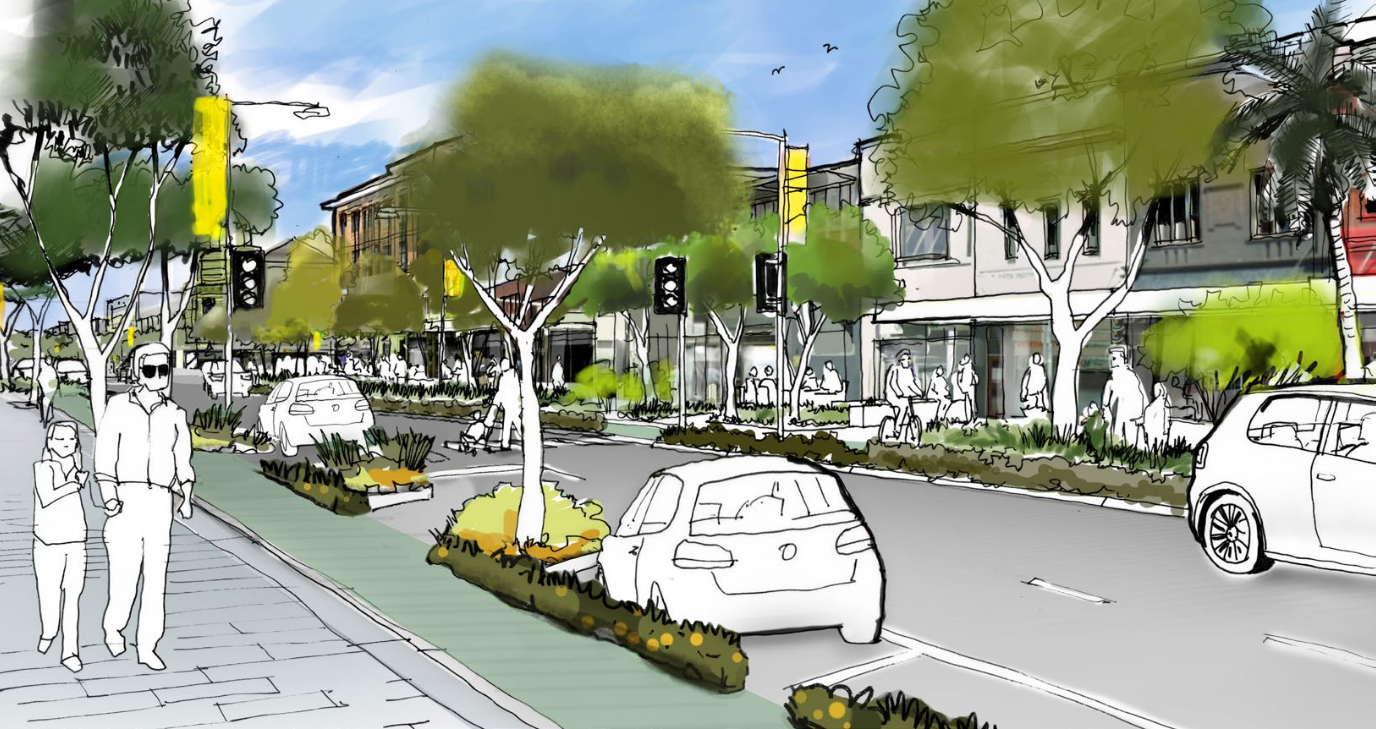
The award-winning project adds to public open space, increases tree-canopy, encourages walking and cycling, and serves as a meeting place in the centre of the CBD.

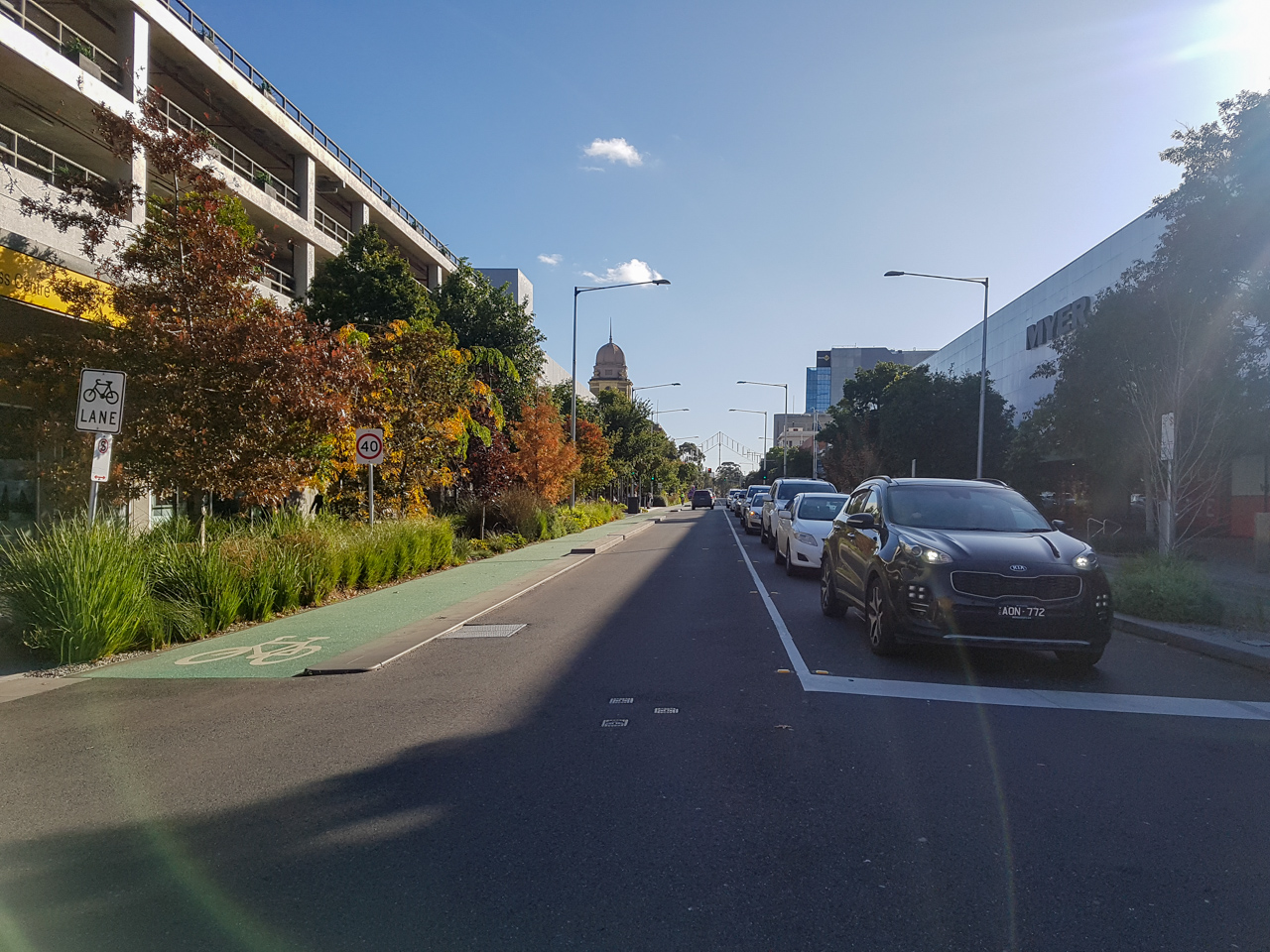

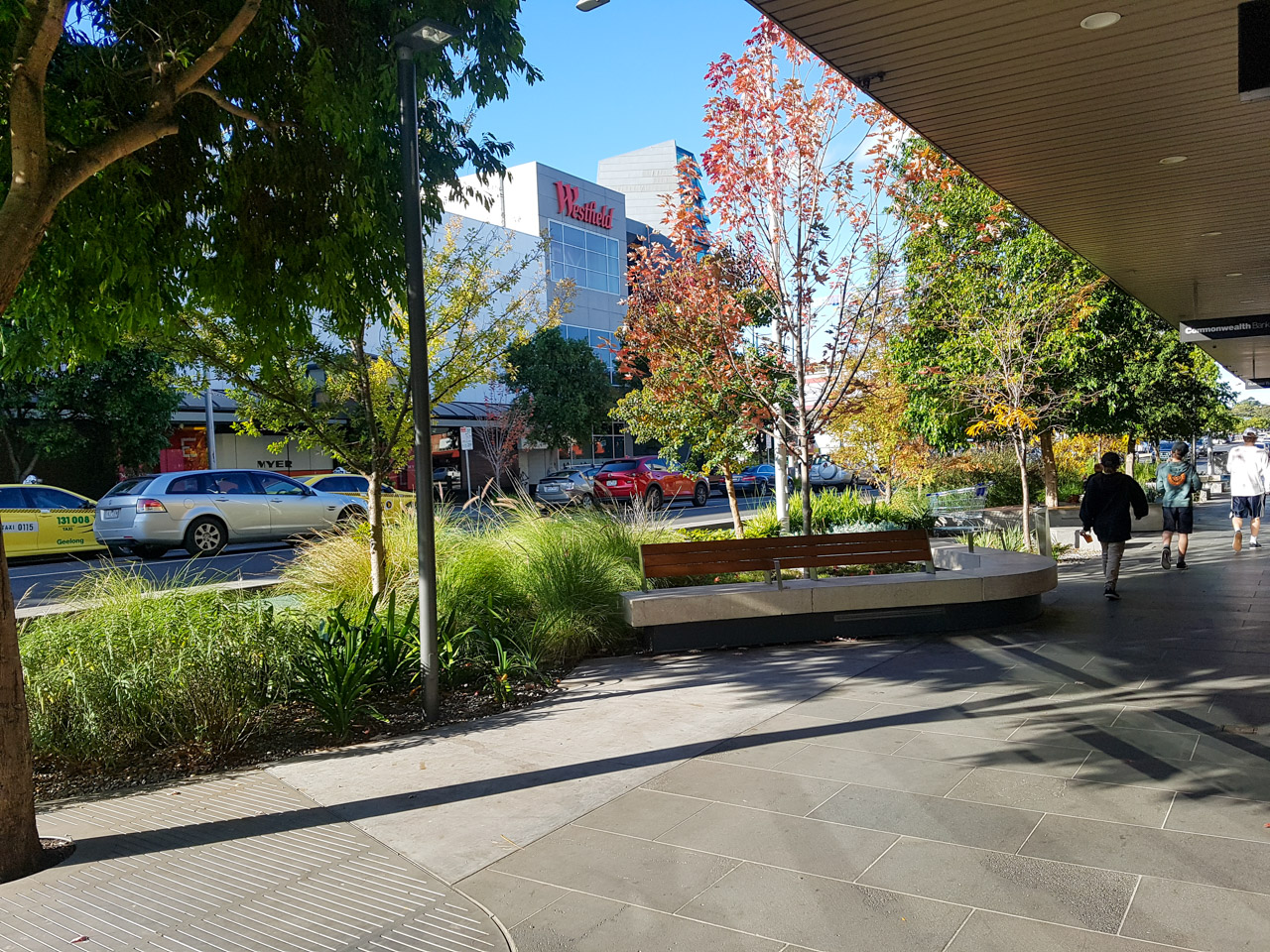

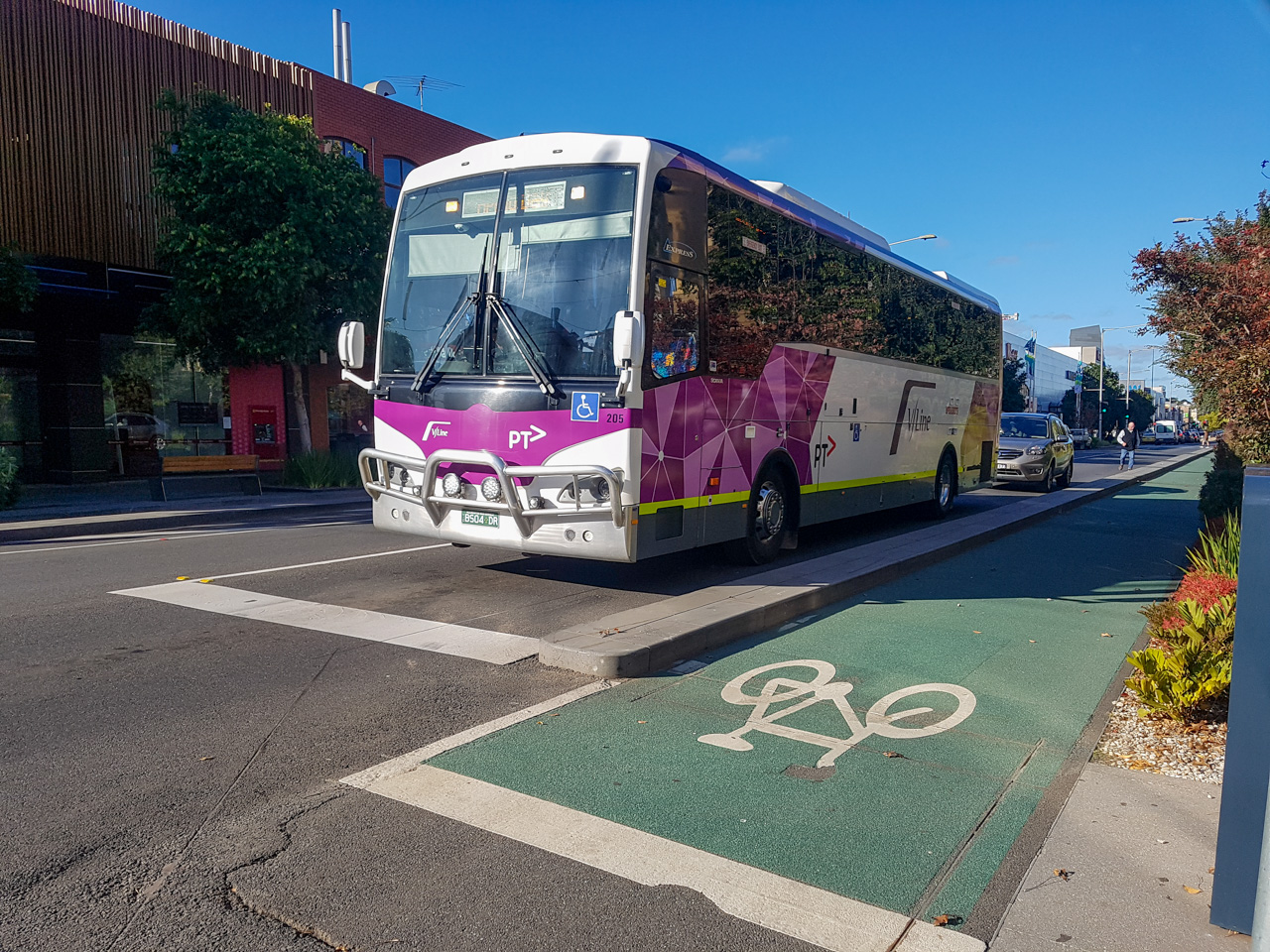
Motion by the City of Greater Geelong
Vocal opponents of the Green Spine who cited traffic and parking issues led to Council discussion of these impacts first in the 12 February 2019 meeting, then in the 25 June 2019, 10 December 2019, and 25 February 2020 meetings. All of these motions calling for increased traffic capacity and parking were moved by Cr Kontelj.
Cr Kontelj’s motion at the City of Greater Geelong Council meeting on 25 February 2020 moved:
That Council: Address the negative traffic (vehicle and people) related issues as noted above and allocate the required budget (in 2020/2021 and any subsequent years) to complete works to Malop Street between Moorabool Street and Yarra Street, which will improve and efficiently service an increase in traffic flow by:
2.1 reviewing the current design of Green Spine to include project design principles to address current disability access and egress concerns such as no disability access from the roadway (i.e. where raised bike lane kerb and channel does not allow access for wheelchair or restricted mobility access or egress to Green Spine pathways from the Malop Street roadway);
2.2 advocating and working with VicRoads to improve the scheduling, timing and synchronising of traffic lights at intersections and pedestrian crossings;
2.3 removing the separated bike lane from the north side of Malop Street;
2.4 installing vehicle turning lanes at the intersections of Malop Street and Yarra Street and Malop Street and Moorabool Street;
2.5 increasing on street 2P car parking locations on Malop Street between Moorabool Street and Yarra Street, without compromising taxi services;
2.6 ensuring works commence no later than the 2020/2021 financial year;
2.7 ensuring all works are conducted in a manner and at times which mitigate disruption to businesses, retailers and the community;
2.8 ensure any changes do not impact on, or take away from the landscape and parkland on the south side of the street;
2.9 adopting design principles that do not restrict potential future availability for Malop Street to operate as a public transport route (i.e. for buses and/or trackless trams);
2.10 encouraging designers of the Green Spine to incorporate and pay tribute to the Aboriginal and First Nation people of this land in the design and construction of Block 1; and
2.11 ensuring Block 1 of the Green Spine, between Gheringhap Street and Moorabool Street, does not include a separated bike lane on the north side.
According to the State Government, the works by Council to undo some of the Green Spine works would cost $2 million. Let’s have a look at some of the points raised.
Turning lanes and congestion
The City of Greater Geelong commissioned GHD to produce the Malop Street Traffic Assessment Report after the Council resolution in the 25 June 2019 meeting. This report looks at the impacts of the Green Spine project and the impact of adding turning lanes at intersections.
GHD’s findings conclude that there are minimal improvements with either additional right turn lanes or left turn lanes out of the Malop Street Green Spine. As such, introducing right turn lanes or left turns lanes on Malop Street at Yarra Street and Moorabool Street will not provide significant benefits to the City of Greater Geelong or the driving community.
It is also stated that most vehicles travel straight at these intersections.
The number of vehicles turning out of the Malop Street Green Spine onto Moorabool Street and Yarra Street (the movements that are the focus of this project) are quite low –- between 15 vehicles and 50 vehicles per hour at both intersections.
And if turning lanes were to be added?
Intersection modelling results determined that on average the inclusion of either a left or right turn has an overall benefit of, at most, 1 second to the overall delay
It is clear that the short right turn bay does not have a significant impact on intersection Level of Service across both intersections.
The most significant improvement for Option 1 is in the PM peak where there is approximately a ten second reduction in delay on the Malop Street West leg at the Yarra Street intersection.
So the qustion becomes, why did Council vote for the motion, against expert advice suggesting there would be minimal benefit to the community?
Read the full report here.
Point 2.2 in the motion calling for synchronisation of traffic lights does have merit, as drivers have trouble following Rule 128a. Increasing Victoria Police enforcement activity, queue detectors, potential education campaigns from Council, and Keep Intersection Clear signs may help resolve this issue. Increasing vehicle volumes along this street will not.
ROAD SAFETY ROAD RULES 2017 - REG 128A
Entering blocked crossings
(1) A driver must not enter a children’s crossing, marked foot crossing or pedestrian crossing if the driver cannot drive through the crossing because the crossing, or a road beyond the crossing, is blocked.

Parking
At the expense of the northern separated bicycle lane, the Council motion also called for an increase in 2P parking spaces.
With a generous length of 6 metres per space as per AS 2890.5, and a total length of 140 metres of parking to be added (an overestimate if turning lanes are to be put in), a total of 21 parking spaces can be installed. 1714 spaces in Westfield and 600 spaces in Market Square already cater for shoppers who drive in. $2 million to make cycling more dangerous, add 21 parking spaces, and reduce average travel time by one second? It’s not hard to see why the State Government stepped in.
The price of on-street parking at many times is lower than off-street parking. This adds to congestion, as people driving search for a cheap, subsidised on-street parking space. On-street parking is public space which is used temporarily by a small number of people. Much of this space could be used more productively to benefit many more people.
Cycling infrastructure
Cycling infrastructure only attracts those who feel confortable using it. A study by the Portland Office of Transportation states that 60 per cent of people are interested but concerned about cycling - if physical protection is not put into place at both mid-block and intersections, then the infrastructure built fails to attract most potential riders. A key aim of the Victorian Cycling Strategy 2018-28 is to promote cycling to the interested but concerned category.
Removing the northern bicycle lane would create a weak link in the network, where Malop Street is planned to be the major east-west cycling route from Eastern Park to Johnston Park; more on the future road network in the next section. This would undermine one of the key aims of the project – to create a cycling friendly corridor for commuters.
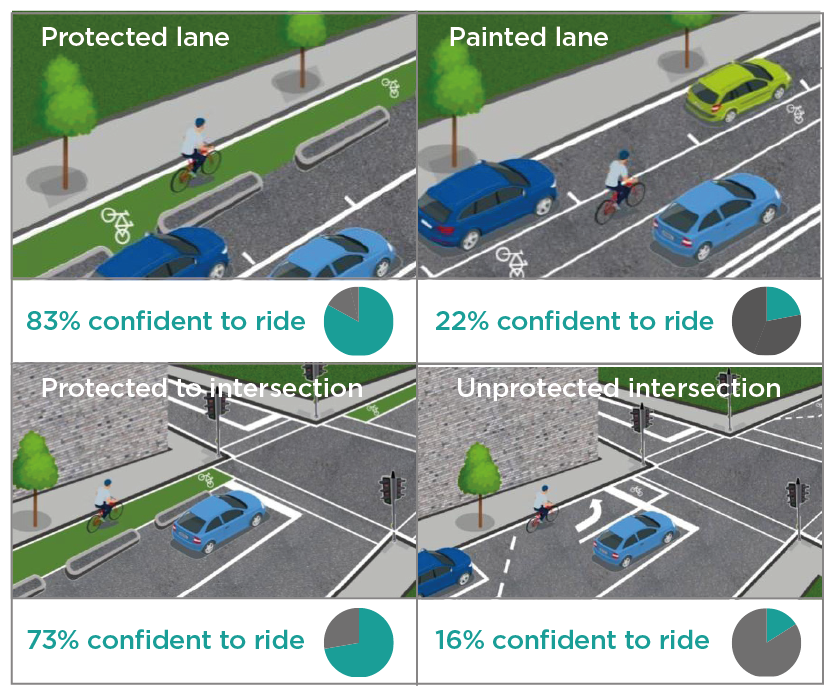
This corridor now extends to Herne Hill with the TAC’s Better Bike Connections western project now complete, and will link to the future Southern Link at Gheringhap Street.
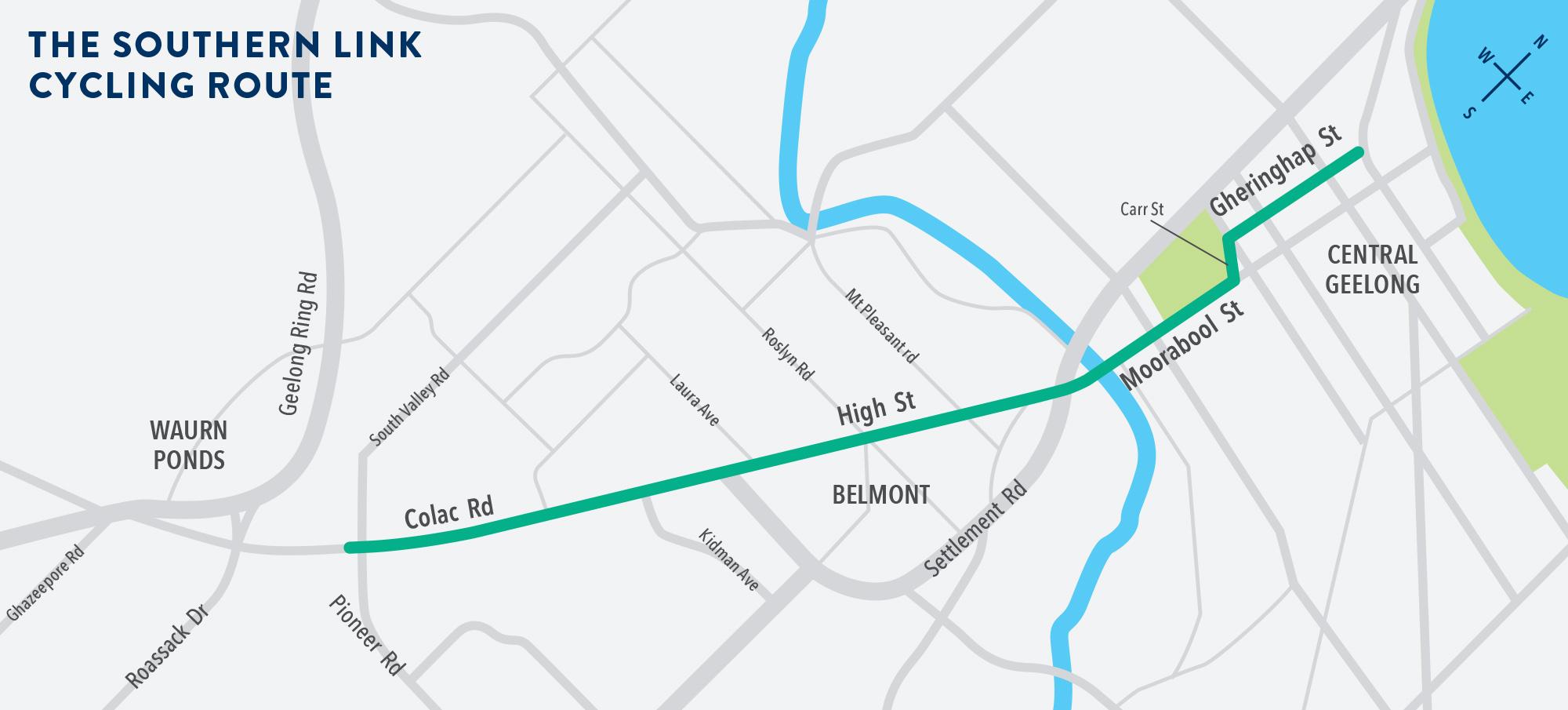
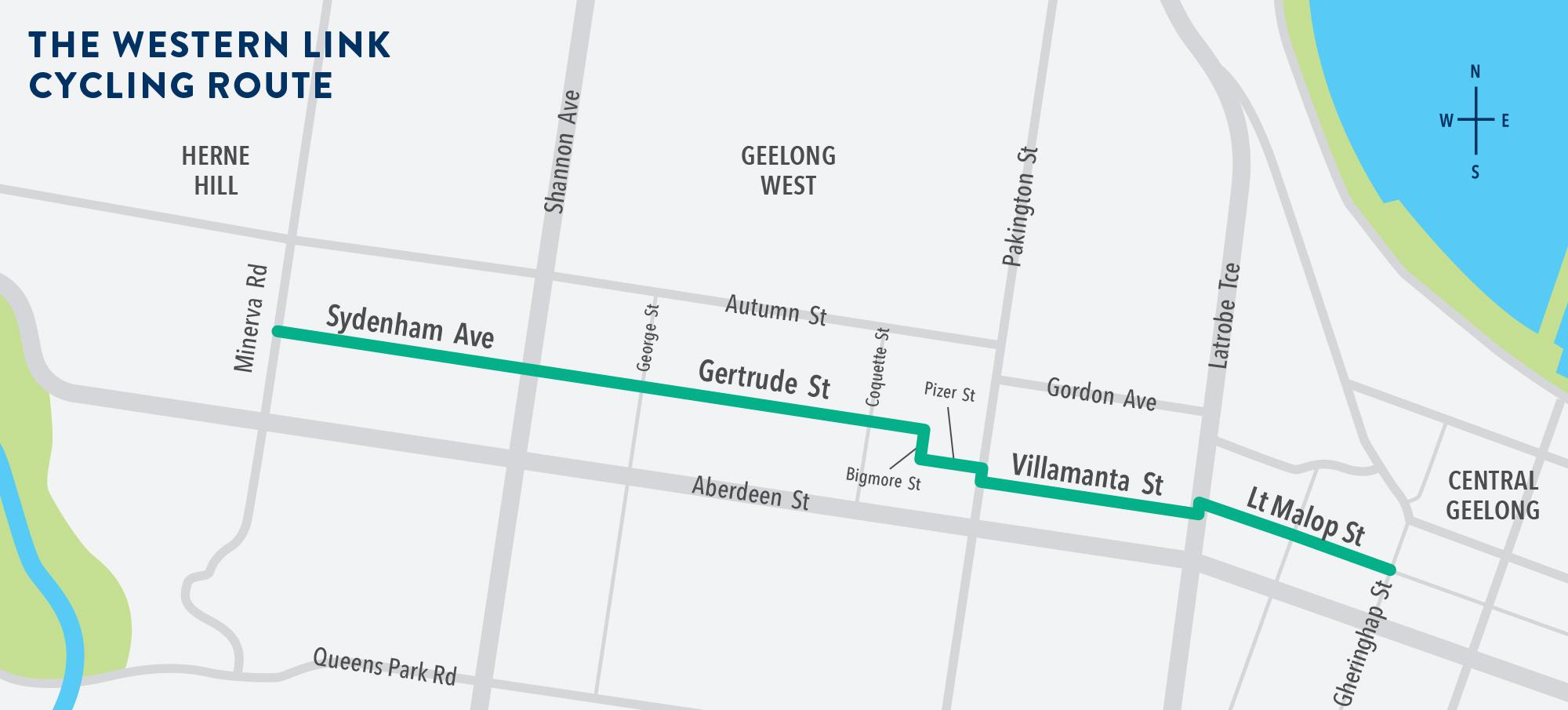
Overall transport network
The Green Spine Investigation Report notes that “as a destination street, the Green Spine aimed to increase pedestrian numbers and reduce through vehicle traffic on Malop Street.”
During mid-day peak (between 12-1pm) pedestrian movements have increased by 11% and now make up 75% of all movement
Traffic volumes halved from 11,500 vehicles per day in April 2016 (pre Green Spine) to 6,000 vehicles per day in Feb-Sep 2019.
Malop Street is intended to serve local traffic rather than through traffic. Using a Movement and Place classification, Malop Street would likely classify as a City Place.
City Places are roads and streets with high demand for pedestrian activities and lower levels of vehicle movement. City Places are places communities value and for people and visitors to enjoy.

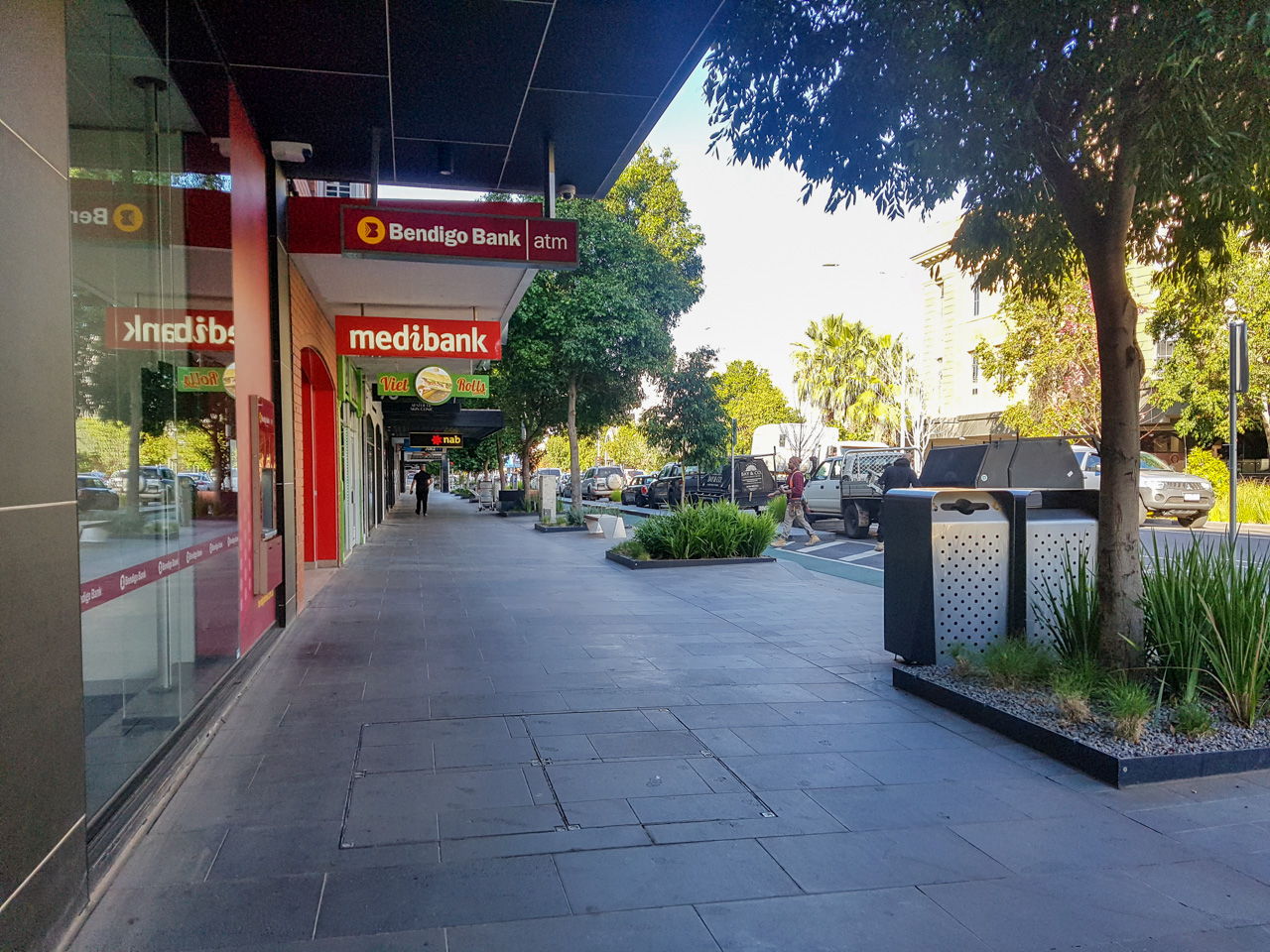
From the above vehicle and pedestrian numbers, the Green Spine project has delivered on creating a more pedestrian friendly environment, decreased through traffic which ideally should be directed towards arterial roads such as Ryrie Street and McKillop Street, and built the first stage of a safe cycling route which are currently scarce in Geelong.
The next stages of the Revitalising Geelong Action Plan aim to transform the rest of Malop Street into a long linear park from the railway station to Eastern Park. Future reconfigurations of the road networks are planned for the western gateway of Malop Street coupled with an expansion to Johnstone Park, with the aim of further reducing through traffic on the Malop Street Green Spine.
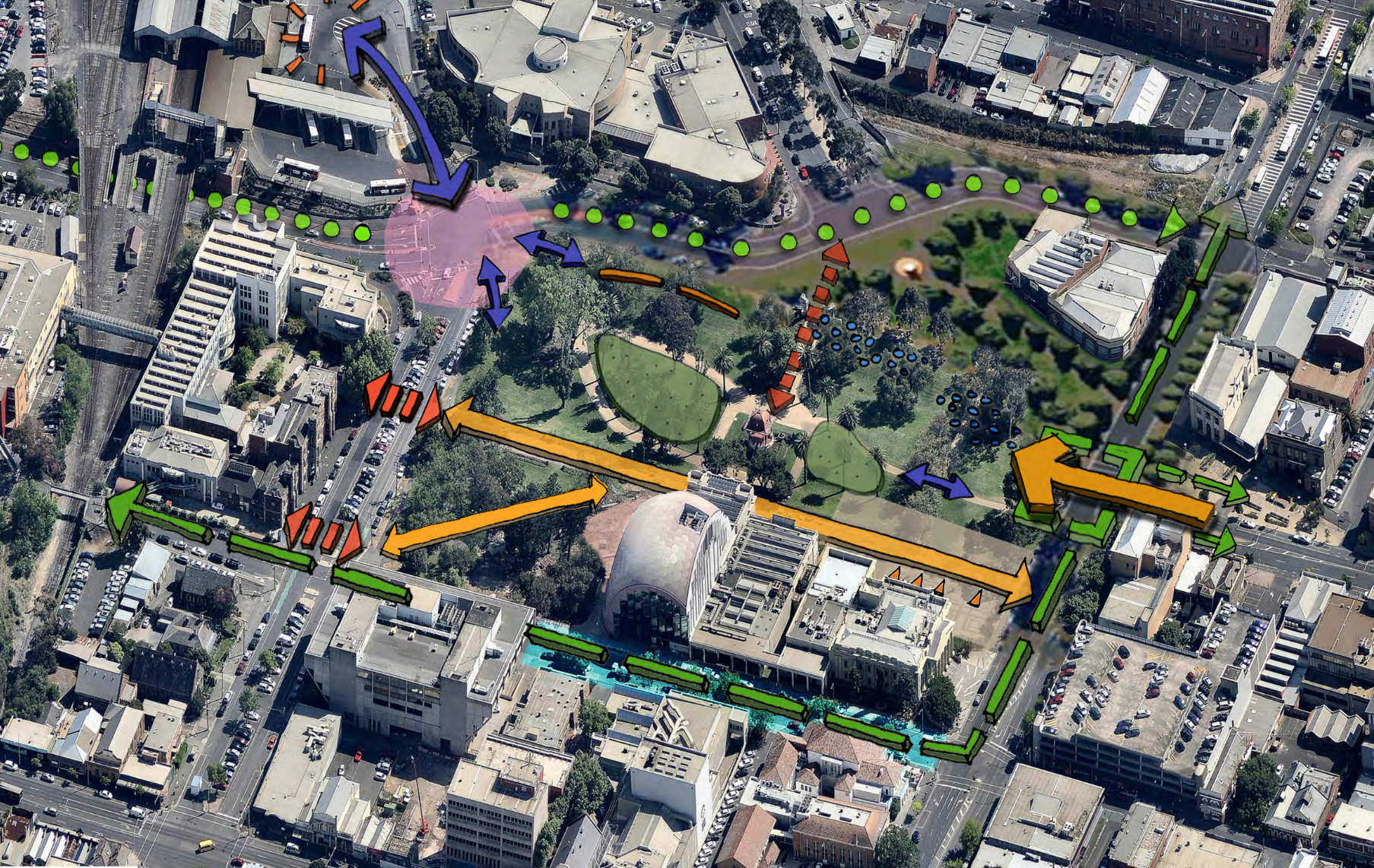
Victorian State Government’s response
Member for Bellarine Lisa Neville responded the next morning threatening to freeze funding.
Unfortunately we won’t be able to fund any more with the risk of the council wasting that money and ripping it up. It is so disappointing council have taken this step.Seen it happen over years with the mall/little Malop/ james street gerringhap street and Malop st intersection
— Lisa Neville (@LisanevilleMP) February 25, 2020
On 21 March, the Victorian Government announced in a press release that it would declare Mercer, Malop and Garden streets a Designated Road Project under the Road Management Act, effectively stripping Council of power to undertake any works without State Government approval. I haven’t yet seen this in the Government Gazette, please comment if this has been done.
The Green Spine is an award-winning project, and I won’t stand by and watch Council spend $2 million to destroy it. That’s why the Andrews Labor Government have declared the Mercer, Malop and Garden Street corridor under state control. This is a great win for our local community. pic.twitter.com/X1NrpC1lxM
— Lisa Neville (@LisanevilleMP) March 21, 2020
The City of Greater Geelong is no stranger to having its power stripped after it was sacked in 2016. Cr Pat Murnane foreshadowed a move like this in the Council meeting:
“We’ve been provided with no evidence as to why it’s necessary. There has been nothing produced other than that we’re told there is a segment of the community that are not happy with the green spine. We may lose control of this, the green spine itself, and maybe even the city.” – Cr Pat Murnane
Response from the Mayor
(2/2) The overall vision for the Green Spine will be more obvious to our community once it’s built all the way from Johnstone Park to Eastern Gardens. We’d like this work to begin as soon as possible.
— Geelong Mayor (@Geelong_Mayor) February 25, 2020
In her full media release, the Mayor outlined her support for the long term vision, but noted slow State Government committment in public transport investment and the next stages of the Green Spine.
It is however, difficult to understand why Council voted for the motion without any evidence suggesting the works would benefit the community, instead all reports provided to Council suggest the contrary.
Experience from the Caulfield to Dandenong Level Crossing Removal Project where vocal residents campaigned against the project citing noise, safety and visual amenity concerns suggests that locals can get it wrong. Decisions to spend substantial amounts of money, in this case $2 million, must be made based on sound advice, expert opinion, alongside addressing concerns from residents.
Note that disability spaces, loading zones, separated one-way bicycle lanes and taxi zones were all constructed following consultation on the Green Spine by Council.
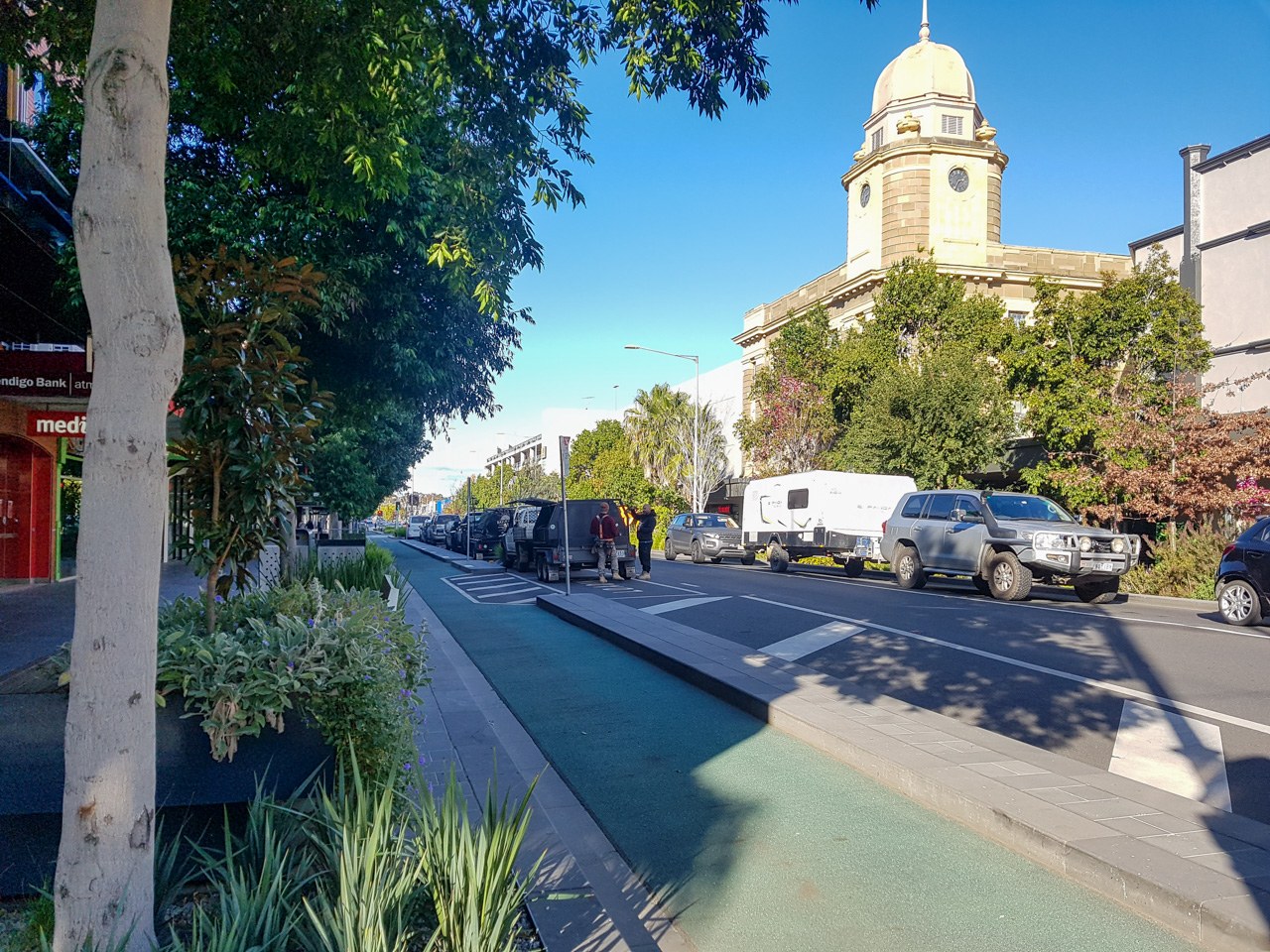

Commentary from others
Shaun Walsh from the Australian Institute of Landscape Architects called the decision a retrograde, appaling waste
“This decision is a retrograde step and is an appalling waste of public funds. Investment should be instead directed to more public promotion and usage of the bikeway as a viable alternative to private cars as part of Geelong’s commitment to addressing climate change and impacts such as bushfires.” – Shaun Walsh from AILA
The motion passed would have been disappointing to many whom worked on the project.
“The most regressive, short sighted, ill-informed, wasteful and profoundly stupid thing a Council could do to this city. Populist, self-serving politics at its absolute worst.” – Dr Fiona Gray, Former Manager Central Geelong and Waterfront at the City of Greater Geelong
And there is no shortage of criticism from the Councillors who voted against the motion:
“Two million dollars of ratepayers money on a hunch, there’s no evidence, all we have is that a portion of the community making representation, and it certainly wasn’t representation to the three Brownbill Councillors, because I like others only heard overwhelming support of the Green Spine.” – Cr Peter Murrihy
“Increasing traffic flow and increasing parking spaces flies in the face of the original purpose. The original purpose is to reduce traffic flow, and increase the walkability, cycle access and livability of the precinct.” – Cr Mason
“If we had a report that came back and said this isn’t improving livability, this isn’t meeting our strategic intent, then happy to review some of these things. But, we’re not basing this on anything, we’ve had expert advice that has said adding extra turning lanes won’t make any difference to traffic flow.” Cr Mansfield
“We would like [the Grreen Spine] completed sooner than later, but we can’t do that by having fights with the State Government and ripping up work that has been done in the process. That will not serve us well in the long term. It will be expensive, it will put us offside with the government of the day.” – Cr Harwood
And some comments from those in favour of the motion:
“I think the modifications that are being proposed being a part of a response to very strong community feedback. And what surprises me is Councillors saying that there’s no evidence for the changes and that it’s not based on anything.
They’re indeed based on something, the community comments about the Green Spine are loud and furious and I think Cr Kontelj’s is plagued, irritated and angry constituents, and that is evidence.” – Cr Asher, Mayor
“I actually think you have to respect the present, and you have to evolve the future. And I actually think this project now, we’ve got enough evidence now to show it’s actually disrespectful to the present.” – Cr Aitken
